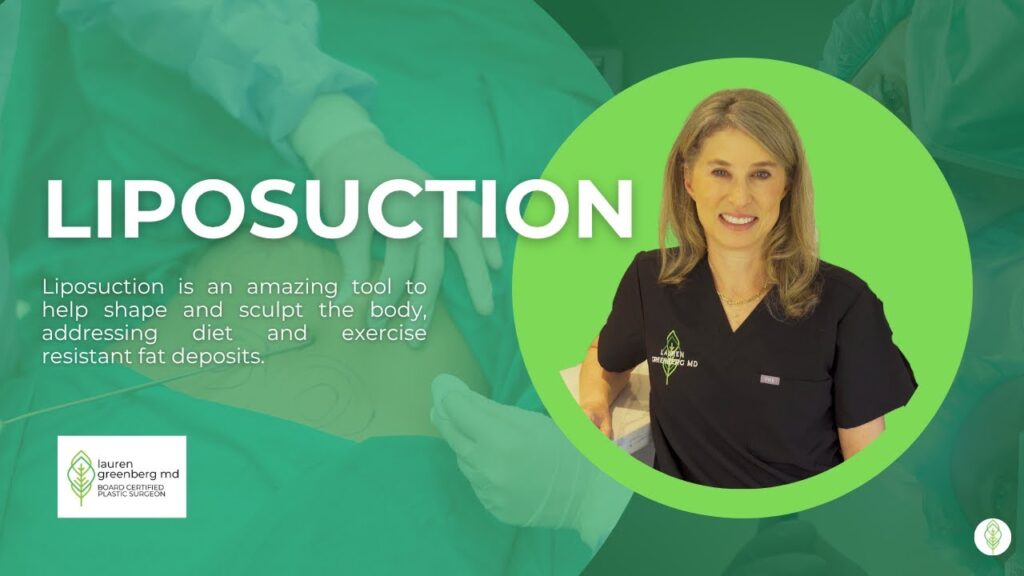What should I expect during liposuction?
Areas to be suctioned are filled with a fluid called “tumescent.” Tumescent fluid is made of anesthetic (to numb the local area and reduce the amount of general anesthetic), epinephrine (to reduce blood loss and bruising), and saline. For procedures of the trunk and thighs, I use two positions (from the front and back) to have a smooth natural transition in the sculpting from front to back. My bias is to use general anesthesia for patient safety, fluid regulation, and more fat removal. I perform the tumescent liposuction procedure in an outpatient surgery center in Palo Alto. Board certified anesthesia doctors give the anesthesia.
I treat my patients globally, usually addressing multiple areas, to help ensure a smooth, natural contour. This is important to make sure future weight fluctuations don’t create a “funny” body shape. I do all ranges of fat removal, from small touch ups to large volume removal (around 5 liters).
Liposuction may not work well as a stand-alone procedure. If your skin has many stretch marks, fine wrinkling, or drooping, you will likely need skin removal. This may involve abdominoplasty, mini-abdominoplasty, medial thigh lift, arm lift, necklift and /or facelift, or body lift.
What are the different liposuction methods?
Ultrasonic liposuction, or UAL, uses ultrasonic energy waves to help break up the fat. I find my patients are very athletic–as most Bay Area people are–and they tend to have firm, fibrous fat. UAL is critical in fibrous areas such as the upper abdomen, back, and thighs, and in secondary liposuction cases. Men in general tend to be fibrous, and should use ultrasonic liposuction. I like to use UAL with most patients, as I feel it helps give a smoother result, larger fat volume removal, and better skin retraction.
SAL is traditional liposuction. This uses cannulas (thin tubes) hooked up to suction. I always follow use of the ultrasonic liposuction with traditional liposuction. As fat removal progresses, I use smaller and finer cannulas to help sculpt and contour.
Laser liposuction uses a laser as its energy source to break up fat as the ultrasonic does. Many use a small gauge cannula, so it needs to be combined with other fat removal techniques. Due to the small size of the cannula, the surgery takes more time. I prefer ultrasonic, as it preserves the stem cells in the fat. Stem cells have huge effects on the quality of the skin (see my blogs on the subject).
All of these different kinds of liposuction are combined with the tumescent technique. All of them remove fat. Downtime following surgery is related to the amount of fat removed and areas treated.
It is difficult to redo a liposuction case. I urge you to choose your surgeon wisely, as your first shot is truly your best shot. Liposuction is one of the most common procedures I perform. I have co-authored a chapter on the subject published in a plastic surgical textbook. I redo many cases from other doctors due to irregularities, fat remaining, and poor shape. A disturbing trend is non-plastic surgeons doing liposuction. Many take a weekend course, and some of the laser liposuction companies are targeting non-plastic surgeons purposefully. There is a skill to doing good liposuction. It is not simply getting out as much fat as you can. I see patients who have loose skin, very irregular fat removal, and poor body shape. These patients were told “if the skin doesn’t look good, go to a plastic surgeon and get a tummy tuck.” When I meet these patients, I know their first surgeon was not a plastic surgeon. They did not have the right procedure for their body type. Please be evaluated by a plastic surgeon and get multiple consultations prior to doing the procedure. See my page on picking a plastic surgeon.
